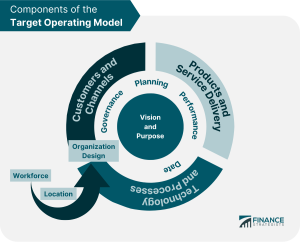Organizational Change Plan: Justification and Implementation
An organizational change plan is an essential process that enables businesses to adapt, thrive, and remain competitive in dynamic and evolving environments. This essay discusses the need for an organizational change plan and presents a comprehensive change plan, encompassing the organization’s type, structure, mission, vision, size, and management style. By implementing this plan, organizations can effectively respond to internal and external factors, enhance performance, foster innovation, and achieve long-term success.
Justification for Organizational Change Plan
A changing corporate environment is characterized by quick technological breakthroughs, fluctuating consumer expectations, and growing globalization. To stay relevant, acquire a competitive advantage, and capture new opportunities, organizations must accept change. Failure to adapt can result in stagnation, a loss of market share, and ultimately, organizational decline.
Organizations frequently experience inefficiencies brought on by out-of-date procedures, rigid hierarchies, and insufficient communication channels. Collaboration is difficult, decision-making is sluggish, and these inefficiencies hamper innovation. Operational efficiency must be improved, a continuous improvement culture must be fostered, and processes must be changed.
Factors affecting the external environment: External elements can have a big impact on organizations, such as changes in laws and regulations, economic fluctuations, and sociocultural changes. Organizations must be nimble, flexible, and adaptable to traverse these obstacles successfully. Organizations that embrace change are better equipped to respond quickly to outside influences, reduce risks, and seize new possibilities.
Organizational Change Plan

Change Proposed: The suggested change is a thorough organizational makeover to foster an environment that values creativity, adaptability, and continual progress. This transformation entails moving away from a rigid, hierarchical structure toward a more adaptable, decentralized approach, giving employees at all levels the ability to participate in decision-making and problem-solving procedures.
Structure: The current hierarchical structure will be replaced by a flatter, team-based structure that encourages cross-functional collaboration and gets rid of administrative bottlenecks. It will be easier to share information, develop creativity, and respond to market demands more quickly with this new structure.
Mission and vision: The mission and vision statements of the organization will be updated to reflect the shifting market dynamics and customer expectations. The vision statement should define the intended future state and the organization’s aspirations, while the mission statement should summarize the organization’s goals and commitment to providing value to customers.
Size: The organization will evaluate its size and scalability as part of the change strategy. Analyzing the current workforce, finding skill shortages, and figuring out the ideal personnel numbers necessary to fulfill the organization’s goals are all part of this evaluation. The organization can be right-sized to maximize efficiency, cost-effectiveness, and resource allocation.
Management Style: The reform plan asks for moving away from a conventional, directive management style and toward a more inclusive and empowering style. Instead of tightly regulating operations, leaders will take on a coaching and mentoring role that promotes staff growth and offers direction. Autonomy, accountability, and employee engagement are all supported by this management approach.
Implementation Strategy for Organizational Change Plan:
To get employee buy-in and commitment to the change process, it is essential to communicate the need for change clearly and transparently. Regular town hall meetings, newsletters, and one-on-one consultations should be held to outline the motivations for the change, its anticipated results, and any potential benefits for both the individual and the organization.
To show their support for change, leaders must get involved in it themselves and set an example for others to follow. They need to be the change’s champion, deal with objections, and offer the tools and assistance required for a successful implementation.
Thorough training programs should be put in place to help staff members adjust to the new structure and management style. These initiatives ought to concentrate on fostering abilities like adaptability, teamwork, and problem-solving to equip staff members with the knowledge and tools they need to successfully take on their new tasks.
Within a few selected departments or teams, pilot projects can be started to reduce resistance and gauge the efficacy of the suggested changes. To gather information, respond to issues, and make necessary changes to the change plan, regular feedback loops should be established. This will help to ensure that the plan is successfully implemented across the organization.
Change is a process that is constantly being evaluated and improved. To regularly assess the effects of the changes and pinpoint areas for improvement, the organization should put in place the necessary tools. Regular surveys of customer satisfaction, performance indicators, and qualitative evaluations can offer insightful guidance for future improvements and modifications as required.
In conclusion, an organizational change plan is essential for firms to succeed in the complicated and fast-paced business climate of today. Organizations can adjust to shifting market conditions, increase efficiency, and promote an innovative culture by defending the need for change and putting in place a thorough change plan. Implementing change successfully requires strong leadership, effective communication, and an emphasis on staff development. Organizations can put themselves in a position for success and growth over the long term by embracing change and continuously assessing its impact.
References for Organizational Change Plan
Anon, (2022). Change Management Institute – For Change Professionals. [online] Available at: https://change-management-institute.com/.
Inc, P. (n.d.). Change Management Resource Center | Prosci. [online] www.prosci.com. Available at: https://www.prosci.com/resources.
L. Sirkin, H., Keenan, P. and Jackson, A. (2005). The Hard Side of Change Management. [online] Harvard Business Review. Available at: https://hbr.org/2005/10/the-hard-side-of-change-management.
McKinsey (2022). McKinsey & Company. [online] McKinsey & Company. Available at: https://www.mckinsey.com/.
PMI (2020). What is Project Management? [online] Project Management Institute. Available at: https://www.pmi.org/about/learn-about-pmi/what-is-project-management.
shrm (2018). SHRM – The Voice of All Things Work. [online] SHRM. Available at: https://www.shrm.org/pages/default.aspx.





